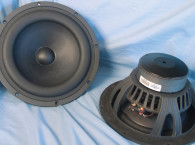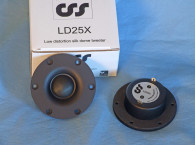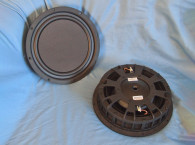Features include a neodymium magnet motor structure, copper foil-clad pole shorting ring (Faraday shield) vented to a damped rear chamber, a compact injection-molded 70mm (2.6”) diameter faceplate and rear cavity, a 4Ω 22mm diameter voice coil with a vented aluminum former wound with copper-clad aluminum wire (CCAW), built-in cavities beneath the dome surround, a foam mounting gasket, and gold-plated terminals.


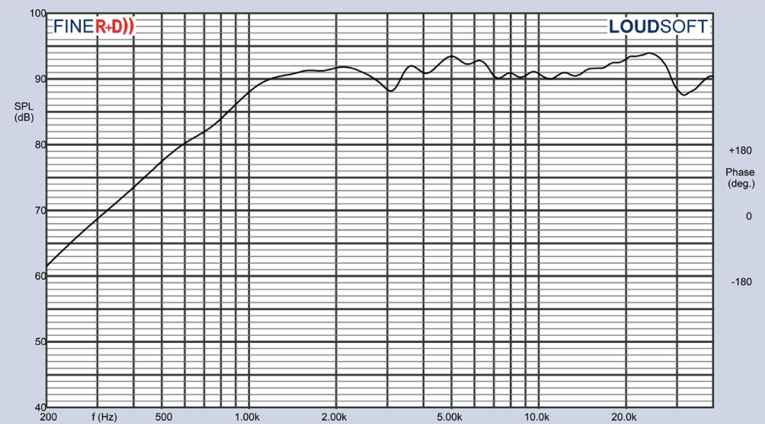


Testing commenced using the LinearX LMS analyzer to produce the 300-point impedance sweep shown in Figure 1. The tweeter resonance occurs at a moderately low 670Hz. With a 3.13Ω DCR (Re), the minimum impedance for this tweeter is 3.5Ω at 3.2kHz.
Following the impedance test, I recess mounted the Wavecor tweeter in an enclosure with a baffle area of 12" × 5" and measured the on- and off-axis frequency response using the LoudSoft FINE R+D analyzer (provided by LoudSoft) and the GRAS 46BE 1/4” microphone (courtesy of GRAS Sound & Vibration). I set up the equipment to measure from 200Hz to 40kHz (using a 192kHz sampling rate) at 2V/0.5m normalized to 2.83V/1m. Sweeps were performed at 0°, 15°, 30° and 45°. Figure 2 shows the on-axis response, which measured ±2.5dB from 1kHz to 20kHz, with the response extending to 30kHz.
Figure 3 gives the TW022WA09’s on- and off-axis response. Figure 4 shows the off-axis curves normalized to the on-axis response. Figure 5 provides the CLIO 180° polar plot (measured in 10° increments with 1/3 octave smoothing). Figure 6 shows the two-sample SPL comparison of the Wavecor TW022WA09, indicating the two samples were closely matched to within 0.8dB throughout its operating range to 30kHz.


For the final test group of tests, I initialized the Listen, Inc. SoundCheck analyzer along with the Listen SCM 2 1/4" microphone (provided courtesy of Listen, Inc.) and measured the impulse response with the tweeter recess mounted on the 12” × 5” test baffle. Importing this data into the Listen SoundMap software produced the cumulative spectral decay (CSD) waterfall plot shown in Figure 7. Figure 8 shows the Short Time Fourier Transform (STFT) displayed as a surface plot.
For the last SoundCheck test procedure, I set the 1m SPL to 94dB (3.87V) using a noise stimulus, and measured the second and third harmonic distortion at 10cm, depicted in Figure 9.
Wavecor’s build quality is typical of the high-end two-channel /home theater OEM driver market, and has remained consistently so for a number of years. The TW022WA09 is well configured and a good alternative to blend with 3.5" to 5.25" drivers in two-way applications, and as Wavecor suggests, it should be able to work in most applications intended for 1" domes. For more information, visit www.wavecor.com. VC
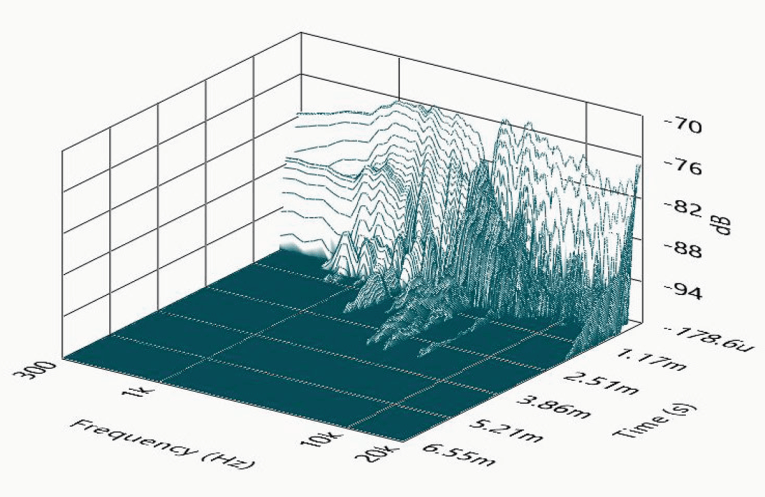


This article was originally published in Voice Coil, January 2021.




